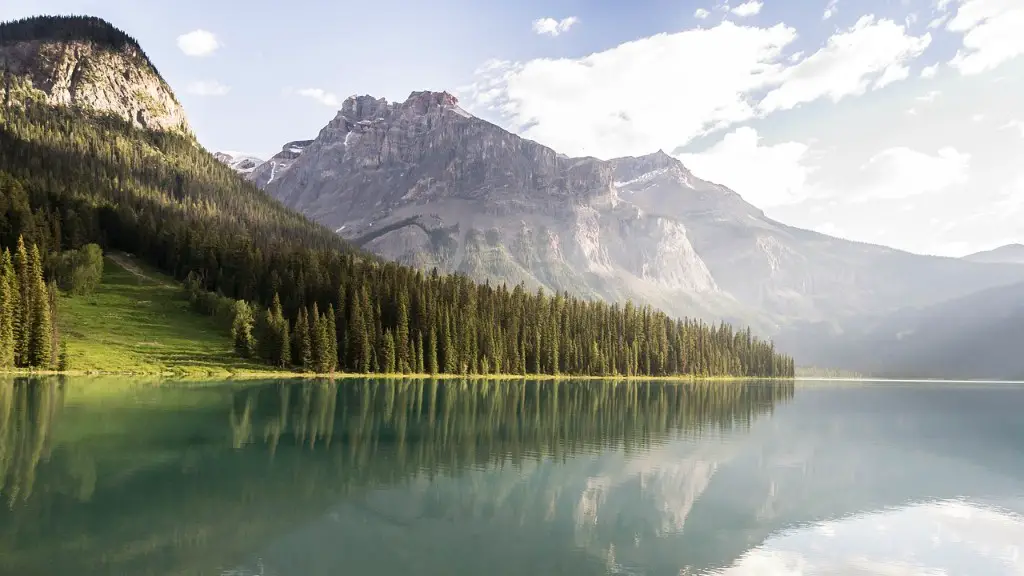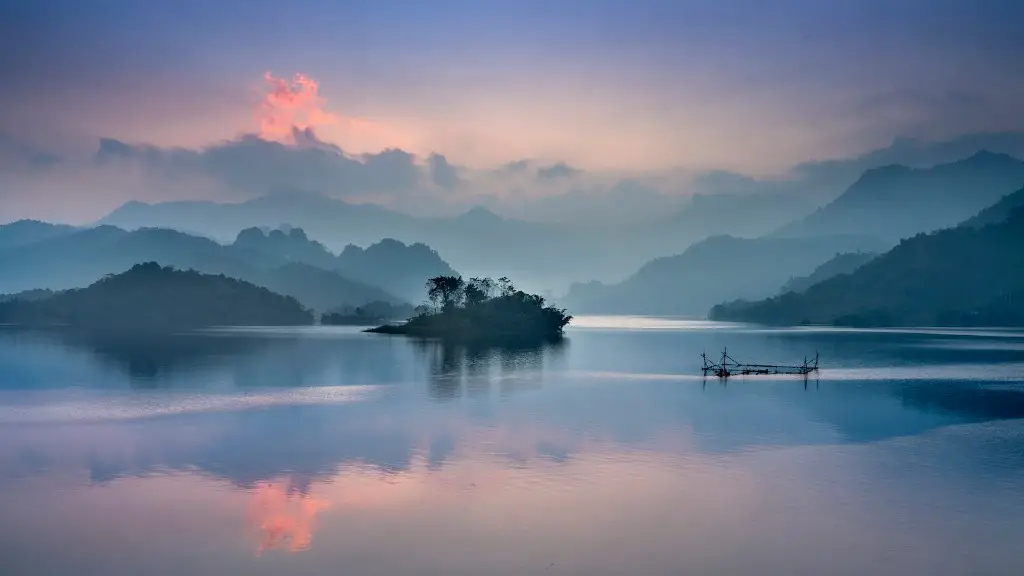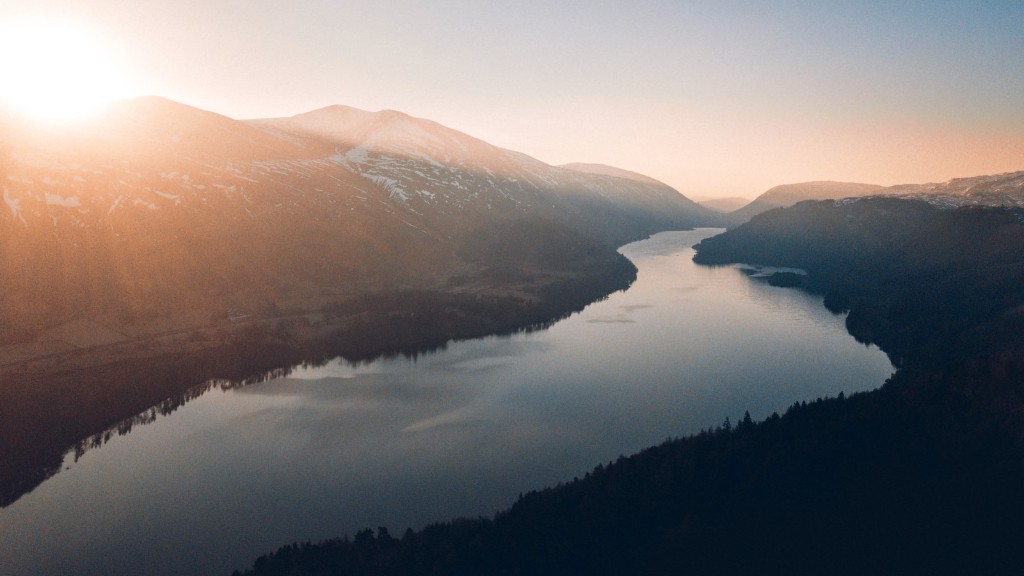Who Lives Near the Nile River
The Nile River is one of the longest rivers in the world, more than 4,258 miles long and stretching through nine countries including Tanzania, Uganda, Rwanda, Burundi, the Democratic Republic of the Congo, Kenya, Ethiopia, Eritrea and South Sudan. It divides between Sudan and Egypt, with the majority of it being located in Sudan and Egypt, and is the lifeline for millions of people living there. An estimated 280 million people live in the Nile basin areas and are dependant on the river for their livelihoods.
Those that live around the Nile River depend on it for many things, such as food, water, energy and transportation. People in the area use the river water for irrigation and drinking water, to transport goods and materials, and to provide energy in the form of hydropower. Farming is one of the most widely used forms of occupation and is the primary economic activity in the area due to the plentiful water sources available.
The most common fish that people of all nationalities in the area consume is the Nile perch, which is a large – mouth freshwater fish in the family Centropominae. It is an important source of food and income for local communities and is widely farmed in the area. Other species of fish are available in the Nile River such as Nile tilapia, Nile catfish, Nile carp and Nile barbel.
The people that live near the river also rely heavily on fishing and agriculture as a means of sustenance. Agriculture is a very important source of income in the area and is typically done on a small scale on the flooded banks of the river during the wet season. The crops grown in the area include maize, wheat, sorghum, millet, beans, groundnuts and cowpeas, as well as cash crops such as sesame, cotton, and sugar cane.
The banks of the Nile River are home to many different kinds of people from numerous ethnic, religious and linguistic backgrounds. People living near the river are mostly from African, Middle Eastern and Mediterranean cultures, such as Egyptians, Sudanese, Nubian, Lebanese, Bedouins and Maghrebi Arabs.
In the past, much of the river was used for transportation by boats and barges. Today, most goods and materials are transported by truck, train or plane, however, the Nile still remains an important thoroughfare as a means of transporting goods, such as timber and agricultural produce, as well as providing access to remote and rural areas.
The region is rich in culture and history, with many ancient temples, tombs and ruins that can be visited. The famous monuments at the tomb of King Tutankhamun and the temples of Abu Simbel, Aswan, Philae and Karnak are some of the most popular sights to visit.
The Impact of Overpopulation
As the population in the area continues to grow, the impact of overpopulation is becoming increasingly more evident. With more people competing for limited resources, there is a greater demand for food, water, housing and healthcare. This has led to the degradation of the environment and habitats in the area, which has had a negative effect on both humans and wildlife.
The naturalsystems of the Nile are also increasingly under stress from development, agriculture, population growth and pollution. The quality of the water in the Nile has been deteriorating due to the introduction of pollutants, industrial effluents, agricultural as well as municipal waste, which is leading to a decline in aquatic life and biodiversity.
Furthermore, the increase in agricultural activities is resulting in the diversion of water for irrigation purposes, which is causing a reduction in the available water levels, leading to a shortage of water for people and wildlife.
The growing population of people living near the Nile is also placing a strain on health care and educational services in the area, as shortage of medical personnel and educational facilities are leading to a lack of access for many people for basic health and educational needs.
The Effects of Climate Change
Climate change is also having an enormous impact on the people who live in the area. Climate change has led to an increasing frequency of extreme weather events, such as floods, droughts and heatwaves, which has had a devastating impact on crops, livestock and natural resources.
Climatic changes have also affected the water supply in the region, leading to an increase in the water levels of the Nile and an increase in flooding, which is causing damage to homes, infrastructure, farms and grazing land.
Climate change is also leading to an intensification of the monsoon seasons, resulting in heavier rainfall, which is causing an increase in water-borne diseases, such as malaria and water-related illnesses, which is having a huge impact on the health of those that live in the area.
The effects of climate change are causing difficulties for farmers in the area, as their crops are being damaged or destroyed due to extreme weather events. This has resulted in a decrease in production and a decrease in income, as well as an increased dependence on humanitarian aid in order to survive.
The Impact of Tourism
Tourism has been playing an increasingly important role in the economy of the region in recent years and it is one of the main sources of employment for many people. Tourism has provided much needed income for those living near the Nile and has had a positive impact in terms of generating employment, providing access to healthcare, education and infrastructure.
However, it has also had a negative impact on the environment with the increased number of visitors leading to degradation of the environment and habitats in the area. If appropriate measures are not taken to reduce the impact of tourism, it could result in further damage to the environment and biodiversity of the region.
The Challenges Ahead
The people that live near the river are facing a variety of challenges, from climate change, population growth and poverty, to declining water levels and environmental degradation. In order to address these issues, there is a need for better education, access to healthcare, improved infrastructure and greater access to resources, coupled with better management of the environment. There is also a need for greater investment in the areas of agriculture, energy and water, in order to ensure the long-term viability of the region.
The future of the Nile River and its surrounding communities is dependent on how these challenges are addressed, not just in the short-term but in the long-term as well. It is essential that actions are taken now to ensure that future generations are able to continue to depend on this vital source of life.
The Role of Government
Maintaining and protecting the Nile River is the responsibility of all the countries it passes through. Each government has the responsibility to ensure that their respective citizens have access to safe drinking water and that the river is managed responsibly. The governments also have a responsibility to ensure that the use of the Nile does not disrupt the environment and that any activities do not lead to further environmental degradation.
The governments of the countries in the region also need to work together to ensure that the river is managed effectively, taking into consideration the interests of all the countries and citizens of the region. There is a need for more concerted efforts to create and implement programs and policies to protect and manage the river, as well as to promote sustainable development and economic growth in the area.
The Role of NGOs
Non-governmental organizations play an important role in supporting the needs of those living near the Nile River by providing access to resources, information, education, training and health services. NGOs also help to raise awareness among the local populations of the importance of preserving and protecting the environment, and they often work in partnership with local governments and organizations to help implement policies and programs that are beneficial to all.
The Nile River is a vital source of life for millions of people and is an important cultural and historic landmark in the region. It is essential that appropriate action is taken to ensure that the people living near the Nile have access to the resources they need, and that the river is managed, conserved and protected in a sustainable and responsible manner.





